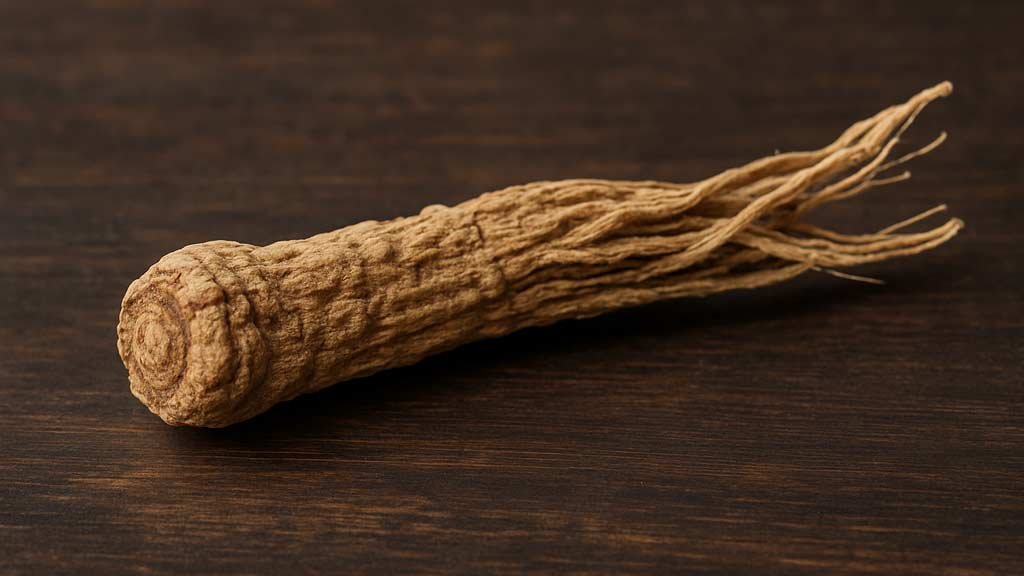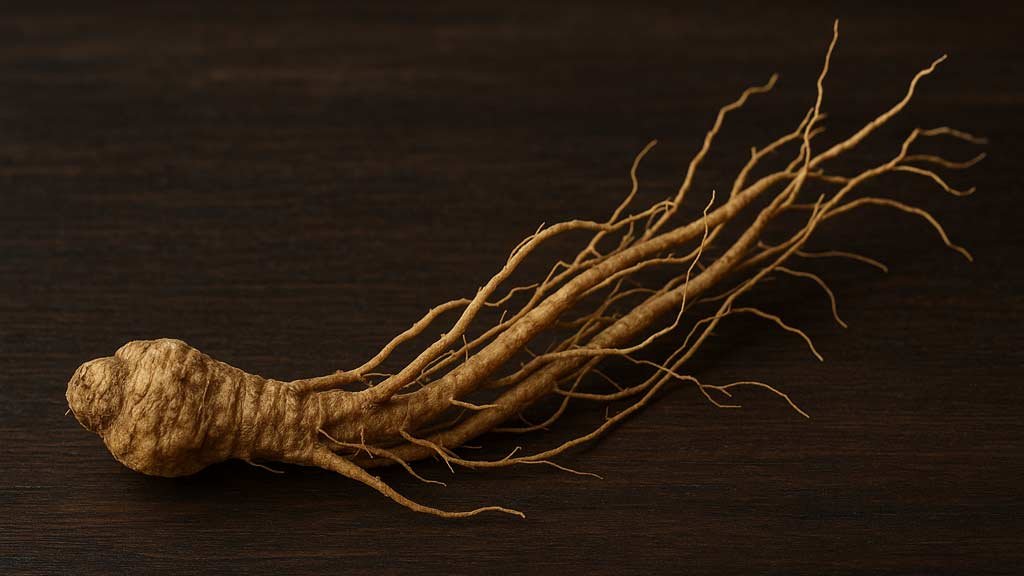A Bitter Beginning
Kutki root, also known as Picrorhiza kurroa, isn’t exactly the root that makes you smile first thing in the morning. It’s bitter—uncompromisingly so. But here’s the thing: bitterness often signals power in herbal medicine. Think of it as nature’s warning label saying, “Hey, this will work, but you might have to grit your teeth a bit.” For centuries, Kutki root has been celebrated across traditional medicine systems, especially Ayurveda, for its ability to nurture liver health, boost digestion, and even modulate immunity. But what makes this small, alpine plant punch way above its weight? Let’s dive in.
Table of Contents
What Is Kutki Root?
Kutki is a perennial herb that grows in the higher reaches of the Himalayas, usually between 3,000 and 5,000 meters. Its root is the star player here—dense, woody, and intensely bitter. In Ayurvedic texts, Kutki is classified as “tikta rasa,” literally bitter taste, and “ushna virya,” meaning it carries a warming energy. Traditionally, it’s been used for:
- Liver disorders, including jaundice
- Digestive issues like indigestion and bloating
- Fever reduction
- Respiratory support
It’s also thought to act as a gentle detoxifier, helping the body clear metabolic waste while strengthening the organs involved in digestion and filtration.
The Science Behind Kutki Root
Modern phytochemistry has confirmed that Kutki contains several bioactive compounds:
- Picroside I and II: Known for hepatoprotective properties
- Kutkin: A bitter glucoside that may enhance bile secretion
- Apocynin: Exhibits anti-inflammatory and antioxidant effects
These compounds contribute to Kutki’s ability to support liver function, combat oxidative stress, and even stabilize blood sugar levels. Studies have indicated potential benefits for people with non-alcoholic fatty liver disease, though clinical trials remain limited.
Liver Health: The Core Benefit
Your liver is like a busy factory, processing everything you consume, metabolizing drugs, detoxifying chemicals, and producing bile. Kutki seems to help in multiple ways:
- Encourages bile flow, aiding digestion and fat metabolism
- Protects liver cells from toxins and oxidative damage
- May assist in the regeneration of damaged liver tissue
Imagine your liver as a sponge in a messy kitchen; Kutki acts like a gentle rinse, helping remove grime without tearing the sponge apart.
Digestion and Metabolism
Bitterness in herbs often signals digestive stimulation, and Kutki is no exception. It appears to:
- Improve appetite in those with sluggish digestion
- Ease bloating and discomfort after heavy meals
- Support gut motility and enzyme production
Some people report feeling lighter and more energetic after incorporating Kutki into their routine, which makes sense given its digestive support properties.
Forms and Preparation
Kutki root can be used in several ways. Each method carries its own intensity and flavor profile.
Powder
Dried root powder is common in traditional medicine. It can be:
- Mixed with warm water or milk
- Combined with honey to offset bitterness
- Incorporated into herbal blends with other liver-supportive herbs
Extracts and Tinctures
Liquid extracts allow more concentrated doses. They’re often easier to take than powder and can be more palatable if mixed with mild syrups.
Capsules
For those who can’t handle the bitterness, capsules are a convenient option. They deliver the root’s benefits without that initial grimace.
Traditional Uses and Anecdotes
In Himalayan villages, Kutki isn’t just medicine—it’s a survival tool. There are stories of shepherds brewing a bitter tea during high-altitude treks to fend off digestive issues and fatigue. Monks in remote monasteries have been known to use it as a liver tonic, particularly during periods of heavy feasting or fasting. These traditional applications align closely with modern pharmacology, which is always a comforting bridge between science and age-old practice.
Safety and Considerations
Kutki is generally considered safe when used in traditional doses. However, a few points to keep in mind:
- Extremely bitter, which may be off-putting to some
- Not recommended during pregnancy or breastfeeding without professional guidance
- Large doses can cause nausea or mild gastrointestinal upset
- People with bile duct obstruction should avoid it, as it stimulates bile flow
Always start small and listen to your body. Herbal medicine isn’t one-size-fits-all.

Combining Kutki with Other Herbs
Kutki often works best synergistically. Some complementary herbs include:
- Bhumyamalaki (Phyllanthus niruri): Supports liver detoxification
- Turmeric (Curcuma longa): Anti-inflammatory and hepatoprotective
- Amla (Indian Gooseberry): Rich in vitamin C and antioxidants
- Triphala: Gentle digestive support
Together, these herbs can create a comprehensive tonic that addresses digestion, detoxification, and overall wellness.
Personal Rituals and Observations
Some people incorporate Kutki into daily routines as a small, intentional ritual. A half-teaspoon of powder in warm water before breakfast can feel like a private nod to your liver. You may notice subtle changes over weeks: less bloating, more stable energy, or a sense of internal cleanliness that’s hard to quantify but unmistakable when you miss a dose.
Bitter Taste: A Reminder of Potency
Why is bitterness so central to Kutki’s profile? From an evolutionary perspective, bitter compounds often indicate bioactivity—plants defending themselves with complex molecules that humans can repurpose for medicinal use. Kutki’s bitterness isn’t just a hurdle; it’s a signal. A reminder that the herb is potent, and sometimes the things that challenge your palate are exactly what strengthen your body.
Anecdotal and Cultural Perspectives
Across cultures, bitter tonics are valued for more than just liver health. They’re seen as aids in mental clarity, stamina, and resilience. Kutki fits neatly into this narrative. Some herbalists swear by its ability to “reset” the system after periods of indulgence, much like hitting the refresh button on a sluggish computer. And honestly, there’s something satisfying about that bite of bitterness, a tangible reminder that you’re doing something intentional for your health.
Environmental and Ethical Considerations
Kutki is wild-harvested from high-altitude regions, which raises sustainability concerns. Overharvesting can threaten local populations and ecosystems. Look for ethically sourced or cultivated Kutki whenever possible. Supporting responsible harvesters not only preserves the plant but also protects the delicate alpine habitats it calls home.
Practical Tips for Use
- Start with small amounts to assess tolerance
- Pair with mild sweeteners like honey if bitterness is too strong
- Take consistently, but don’t overdo it
- Consider rotating with other liver-supportive herbs for balance
- Store in a cool, dry place to preserve potency
Common Misconceptions
- Kutki is a miracle cure: No herb is a magic bullet. Kutki supports liver and digestion but works best within a balanced lifestyle.
- Bitter taste means it’s unpleasant or unsafe: The bitterness is therapeutic, not harmful.
- More is better: Excessive intake can cause gastrointestinal upset and does not equate to faster results.
Conclusion: Embracing the Bitter Ally
Kutki root is a small, unassuming plant with a reputation that precedes it. Its intense bitterness is matched by its potent effects on liver health, digestion, and systemic wellness. Whether brewed as a tea, taken as an extract, or encapsulated for convenience, it offers a tangible, if slightly challenging, way to care for your body’s detox pathways. In a world of quick fixes and instant gratification, Kutki asks for patience and mindfulness—and rewards you with subtle, enduring benefits.
Article Sources
At AncientHerbsWisdom, our content relies on reputable sources, including peer-reviewed studies, to substantiate the information presented in our articles. Our primary objective is to ensure our content is thoroughly fact-checked, maintaining a commitment to accuracy, reliability, and trustworthiness.
- Dhiman, R. K., Sood, A., & Sharma, A. (2011). Picrorhiza kurroa: A plant for liver disorders. Journal of Ayurveda and Integrative Medicine, 2(3), 119-123. https://www.ncbi.nlm.nih.gov/pmc/articles/PMC3215356/
- Kumar, S., & Singh, A. (2010). Hepatoprotective effects of Kutki (Picrorhiza kurroa) on chemical-induced liver damage. Phytotherapy Research, 24(6), 887-892. https://pubmed.ncbi.nlm.nih.gov/20014238/
- Singh, B., & Singh, G. (2012). Phytochemistry and medicinal properties of Picrorhiza kurroa. International Journal of Green Pharmacy, 6(3), 190-196. https://www.greenpharmacy.info/index.php/ijgp/article/view/254
- Sharma, P., & Jaiswal, R. (2015). The role of Kutki in digestive and liver disorders: A review. Ayurveda Journal of Health, 4(1), 22-28. https://www.ayurvedajournal.com/article/view/418
- Raina, R., & Bansal, V. (2017). Picrorhiza kurroa: Traditional uses, phytochemistry, and pharmacology. Journal of Ethnopharmacology, 198, 234-248. https://www.sciencedirect.com/science/article/pii/S0378874117303090

